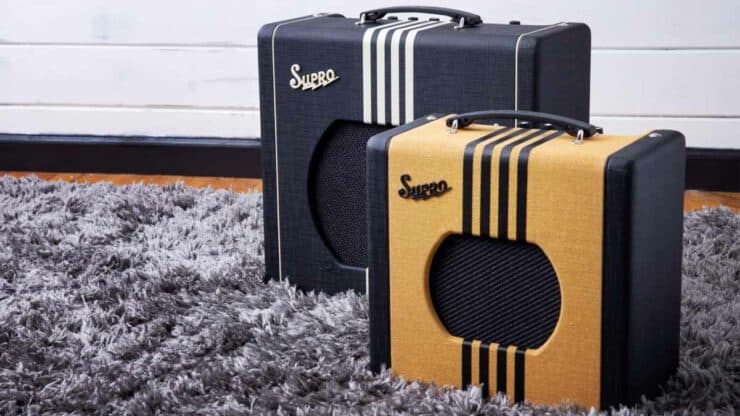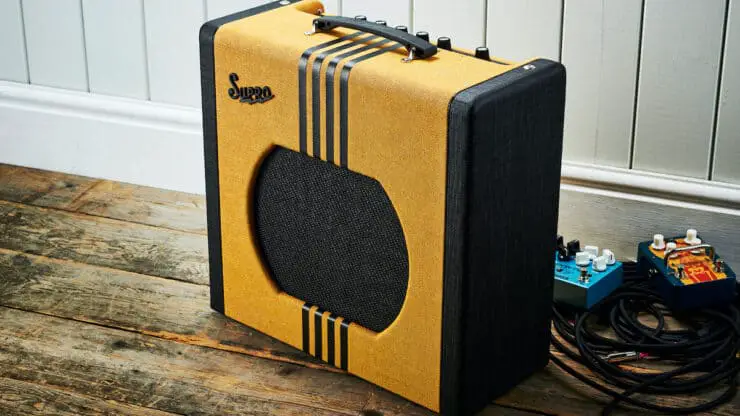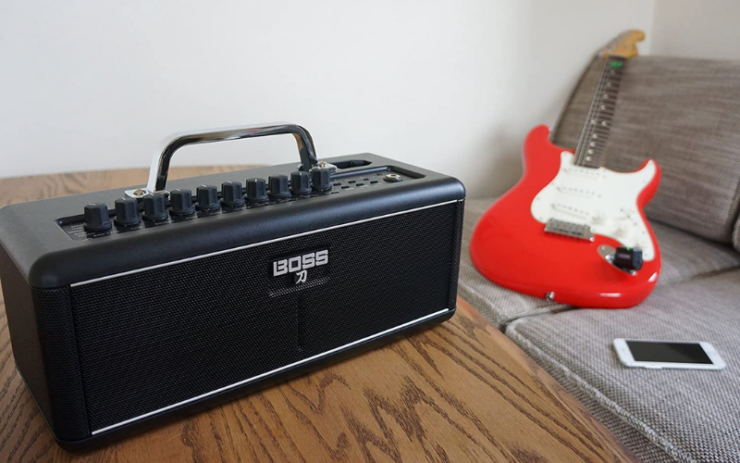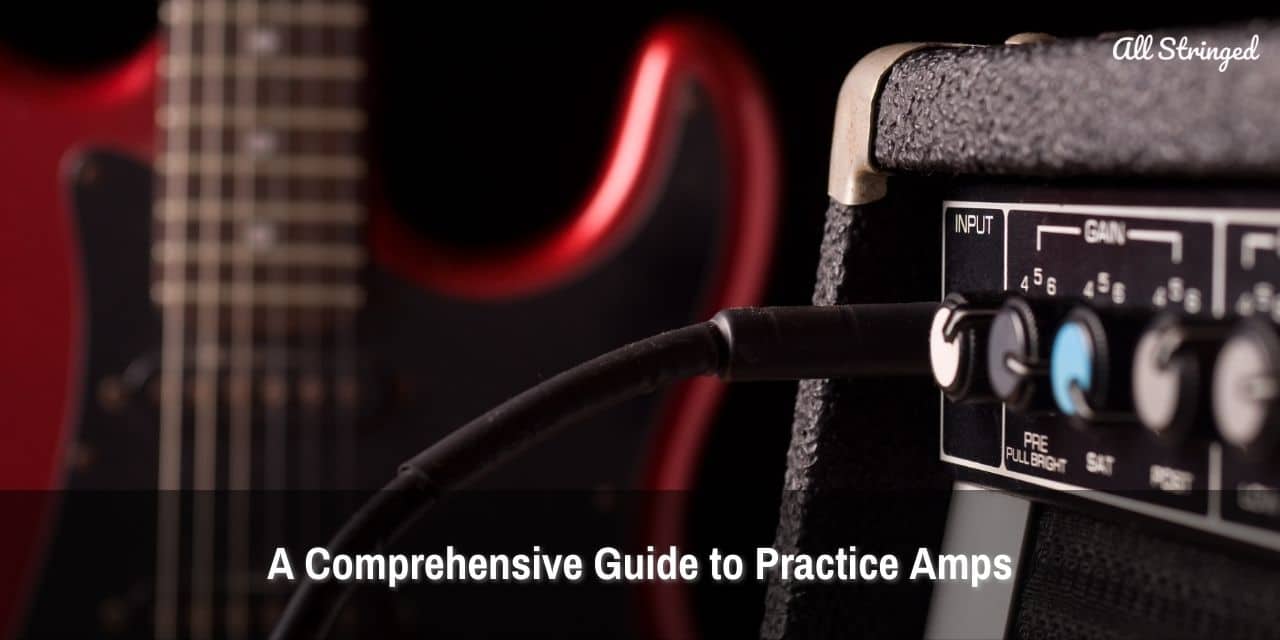Are you looking to take your guitar playing to the next level? With the right practice amp, you can take your skills from amateur to professional. This comprehensive guide will provide you with the information you need to choose and use a practice amp to reach your goals. Whether you are a beginner, intermediate, or advanced player, this article has something for everyone. Read on to discover how to get the most out of your practice amp and advance your guitar playing.
What is a Practice Amp?
A practice amp is a small, portable amplifier that can be used for amplifying the sound of an electric guitar. These amps are used by beginners or those who are starting out as they’re rather inexpensive and easy to use. Practice amps typically come with a wide variety of features such as a headphone jack, built-in toner, and distortion effects.

Practice guitar amps have come a long way due to the advancements in modeling technology. The number of top-quality practice amps that are great for home use has definitely increased. It has become an extremely competitive market with classic amp manufacturers like Marshall, Fender, and Vox getting on the act. These amps are relatively low cost as a practice amp is something that supplements your main rig instead of being the star of the show. This doesn’t necessarily mean the quality suffers, there are still all-tube options for musicians who cannot live without the real deal.
ALSO READ: Best Practice Amp: Top 7 Picks to Play Anywhere!
Common controls on practice amps
Even though practice amps come in a variety sizes with various features and special buttons, there are many settings that are universal across all models. This way, even if you are presented with an amp that you haven’t seen before, you will still be able to navigate your way around the amp.
#1. 3 band EQ
Arguably the most common feature that you’ll see on a practice amp is a simple 3-band EQ with bass, treble, and middle knobs. How exactly they’re voiced and respond could differ from amp to amp, but the basic principles will largely be the same. You should twist them if you want to make the named frequency band quieter or louder.
Some amps have a dedicated 3-band EQ for the channels. For example, the ENGL Invader is a 4-channel amp, but it still has a dedicated EQ for each one. Other amps use what is called a Global EQ. This means the EQ is applied to the overall tone irrespective of which channel you are on.
#2. Gain
Gain represents how hard it is driving the signal. More gain will mean more distortion. Sometimes, you’ll find two gain knobs on the amp, with the one on the left generally being the preamp gain. Meanwhile, the one on the right will be the power amp gain.
#3. Presence
This is named this way because it is designed for pushing your sound and letting it cut through better, becoming more present. What it means in terms of frequencies will be an increase in the upper mid-range. Use it to help the lead guitar pop or to brighten up a dark-sounding guitar.
#4. Reverb
Reverb is a bit more common on combo amps and vintage amps. An in-built reverb offers great convenience for players who don’t require many effects and have everything packed in their amp. The exact type of reverb and is it a spring or plate depends on the amp.
#5. Tremolo
Tremolo is a common effect that comes in-built on older amps. It may also contain individual knobs for the speed of the tremolo effect and its intensity.
Different types of practice amps
There are many things that you must know about practice amps if you’re looking to buy one. If you know what type of sound you want from your amp and the volume and size you need, it’ll be important to know different types of practice amps. Understanding the differences between practice amps is one of the most important things to know when buying a practice amp. In general, there are four different types of guitar amps in the market.
#1. Solid-State Amps
Also referred to as analog amps, a solid-state amp makes use of transistors in its power supply and preamp configuration. Generally, solid-state amps are “clean” surrounding and are known for their reliability and durability. Many guitarists choose solid-state amps for practice amps, while professionals often take them on tour as they rarely require repairs.
#2. Tube amps
Tube amps use vacuum tubes for increasing signal power and boosting volume. The sound of a tube amp can be described as “fat” or warm. Tube amps are much louder than solid-state amps, even if they have the same wattage. Meanwhile, the tones produced by tube amps have a more natural texture.
Often, tube amps feature two separate channels. One of them is a clean sound while the other is a distorted sound. The players will have the option to switch between these two channels. Tube amps tend to be large and heavy amps. Further, they also require more maintenance and repair. The tubes themselves might have to be replaced from wear and tear.
#3. Modeling amps
Also referred to as digital amps, a modeling amp is the newest evolution of guitar amps. These amps make use of software to “model” the sound of many vintage tube amps. In other words, these amps can replicate the sonic palette of multiple different amplifiers. Some modeling amps include built-in effects as well. As modeling amps rely on computer parts, they are pretty lightweight compared to tube amps and solid-state amps. Further, they are more durable too.
#4. Hybrid amps
Hybrid amps combine vacuum tubes with solid-state technology. Typically, they make use of a tube in the preamp and solid-state circuitry in the power supply. This helps mimic the sound of a tube amp without actually using heavier power tubes, so these amps will be smaller and more portable.

Why is it important to have a good practice amp?
A good practice amp is important as it will help you improve the sound quality of the music. Practice amps make it easier to hear your music when you are playing it. An amp’s power capability is among the most important factors to consider when selecting one. With a high-power rating, the amp can outperform other manufacturers in terms of driving real loads like electric guitars or speakers.
Aside from the impedances that the amp is made of, it also comes with a different source impedance. This is the equation that’ll determine how well an amp can send the audio signal into a speaker or other load. The higher the source impedance is, the higher will be the amount of power needed for producing the same level of audio. The only major difference between a high-end amp and one having lower power and source impedances will be their power and performance.
How to choose a practice amp?
#1. Consider the type of music you’ll be playing
First, you must consider the type of music you’ll be playing. Is there a particular genre that you love more than others? Do you play solo or with a band? Do you play electric guitar or do you make use of an amplified acoustic model? Each of these factors will influence your choice of guitar amps.
A guitar amp can have a massive impact on the instrument’s sound during practice. Some amps deliver a clean, smooth sound, which is generally preferred by jazz guitarists and musicians who focus on indie rock and pop. Meanwhile, other amps create more “texture” like distortion and buzzing, which is usually the favored sound of guitarists who play punk, classic rock, or metal genres.
Similar to a guitar, every practice amp comes with own personality. You must choose wisely and ensure that you are buying a guitar amp that fits you and your group. If you are testing different amps in a store, you shouldn’t necessarily pick the first model that you find interesting. Give it a thought and take time to ensure the amp’s sound actually fits your music.
New guitarists might be hesitant to commit to an amp before they have successfully discovered their signature style. If you are not sure, you should choose an amp that offers a versatile sound profile. Many newer practice amps offer a wide range of tones that work with numerous music genres.
#2. Consider volume, material, size, and weight
Next up, you will have to address the practical aspects of your music. The first one will be volume. On average, how loudly do you have to play? Are you looking to buy the amp for practicing alone at home, or will you be practicing in a bigger area with your band?
With practice amps, sound volume is generally measured by power in the form of watts and speaker sizes. A smaller amp utilizes 10–30 watts of power and has speakers ranging from 8-inch to 10-inch. These amps will be a great choice for practicing at home or in a studio.
For rehearsals with a band or shows in a small capacity venue, most guitarists go for a medium-sized amp with 50 watts and 12-inch speakers. Large amps start off at 100 watts and speakers of more than 12 inches. These power amps are the best option for playing at a big venue where you have to be pretty loud.
The second practical aspect that you should consider will be the size and weight of your guitar amp. How often will you be traveling with the amp? If it is difficult to lug around the heavy amp on a regular basis, you should go for a smaller or medium-sized amp.
After that, you will need to consider the materials used in the construction of the amp. The case that contains the amp’s electric parts and speakers is known as the “cabinet”. Cabinets are largely made using wood. The type of wood and its thickness greatly affects how the sound resonates from the speaker.
#3. Effects and special features
Lastly, when considering how to choose a practice amp, you should think of special effects and other features. Many practice amps include digital effects like reverb, tremolo, and effect loops. You can even find amps that offer channel switching, which allows the players to switch from a clean sound to a distorted sound by pressing a foot pedal or flipping a switch.
Some amps include separate EQ controls for every channel. This will allow you to easily adjust volume and distortion specifically. Other special features include outputs for digital recording. However, remember to choose the effects that you will actually be using. Some beginners overspend on fancy digital amps for features that aren’t even needed. Moreover, you must consider the type of music you’ll be playing and let it influence your decision.
RECOMMENDED: The Ultimate Guide to Guitar Amps
Do pedals work well with practice amps?
The answer to that is yes, but it will depend on the type of practice amp you’ll be using. If you’re using a solid-state practice amp, most pedals will work just fine. However, if you’re using a tube practice amp, then you may have to use a pedal that is specifically designed to be used with tube amps.
The addition of guitar pedals will produce a versatile tone and flavor to your music. Regardless of whether the amp is modeling or a valve, all guitar pedals can be used in it. When it comes to tone, some amplifier combinations and effect pedals aren’t compatible. Solid-state amps are generally uninspiring and don’t produce real distortion, which is the biggest complaint of guitarists. When your amp’s core tone doesn’t match your own, a distortion pedal might be the solution.
If you’re looking to create a unique sound around the pedals, a platform amp will be the best option. The pedal platform amp will be ideal for use with pedal-powered vehicles due to its ability to outperform other types of amps. These types of amps come with a lot of “headroom”, which allows them to deliver loud shimmering clean tones and push them into overdrive or distorted sound with pedals. For practice and gig work, they’re usually single or two-channel amplifiers with enough wattage for use.

How much does a practice amp cost?
It can be quite difficult to predict what the price of a practice amp will be. Practice amps for sale could range in price from $100 to $700. Between these two extremes, there will be a wide range of amps that can be tailored to individual needs. The Fender Champion 20 amp, which sells for $100 to $150 is a great example of an amp in this price range.
This amp will be ideal for beginners who are starting to learn how to play the guitar. This option has a simple design, a great sound, and is basic to use.
Meanwhile, the Orange Crush 20 will be a more expensive amp, and it’ll be ideal for intermediate players who prefer more control over their sound. The Fender Champion 20 has a lot more features than the latter while also being easier to use. If you’re an advanced guitarist, you may want to look at purchasing the Boss Katana 100 or Fender Champion 100.
The Boss Katana 100 or Orange Crush 20 are among the most advanced guitar amps on the market, but they are quite expensive as well.
Does it matter what amp you get for your guitar?
Generally, it does not really matter. Any practice amp will do just fine as long as it makes your guitar sound loud enough. It’ll be more important to get a practice amp that has the right type of sound for the music you’re going to play.
A guitar amp will be important for producing sound. When deciding how to improve the guitar sound, you should always look at the amp instead of the guitar. The sound of a cheap guitar can be enhanced significantly if you use a good amp. A wide variety of factors affect the output of an amp. When compared to small speakers, an amp with bigger speakers generally produces higher volume and sound. When you’re performing in a band, you need to have a high-wattage amp. If you’re practicing at home, you’ll require a solid-state amp rated at 20 watts.
If you are a beginner, you must skip the tube amp. A sound amp is a device that produces sound. Meanwhile, an amp controls all sound effects, volume, and tones. An amp with a high price is capable of making a significant difference in the sound of the musical instrument. The distinct differences between cheap and expensive amps will help you decide whether or not you can buy them.
A quality Marshall amp is available for around $600. A $600 amp will not only allow you to practice at home, but you can also perform live with your band. A guitar will likely cost 50% less than an amp. It is always nice to have a decent amp as it can drive you to play more because its tone will always be great.
As a result, it’ll be a good idea to split the purchase of an acoustic guitar evenly. Generally, it is recommended that you should buy a guitar priced at around $300 or more from a reputed manufacturer with good sound. A decent amp that delivers good performance will cost you around $150. A lower-priced amp, on the other hand, might result in a substandard product.
The practice amp should be able to deliver 2x as much power as the speaker’s program or continuous power rating to produce the best possible sound quality. As a result, if the speaker has a nominal impedance of 8 ohms and a rating of 350 watts, it’ll require an amp capable of producing 700 watts into an 8 ohms load.
FAQs
What should I look for when choosing a practice amp?
When choosing a practice amp, it’s important to consider your budget, power and speaker size, tone and volume controls, portability needs, and available space for storage. You should also consider the type of guitar and playing style you will use with the amp. Different amps offer different features and benefits, so it’s important to find the one that best meets your needs.
What are the benefits of having a practice amp?
Practice amps are designed to be lightweight, portable, and convenient for practice at home or on the go. They typically have a lower wattage and smaller speaker sizes than regular amplifiers, allowing for lower volume levels and quieter practice. They also usually come with headphone jacks, allowing for silent practice.
What is the difference between a practice amp and a regular amplifier?
Practice amps are designed specifically for practice and typically have lower wattage, smaller speaker sizes, and simpler controls compared to regular amplifiers. Regular amplifiers, on the other hand, are designed for performance and often have higher wattage, larger speaker sizes, and more advanced features.
How much should you be spending on a good amp?
Beginners spend a lot of money on their guitars and amps, spending almost $100 to $150 on an amp and $2,500 to $3,000 on guitars. If you’re looking for more volume, you must upgrade your amp rather than wait until you require more. If you wish to purchase a guitar with a signature tone, the best thing to do will be to buy one that is a bit more expensive.



